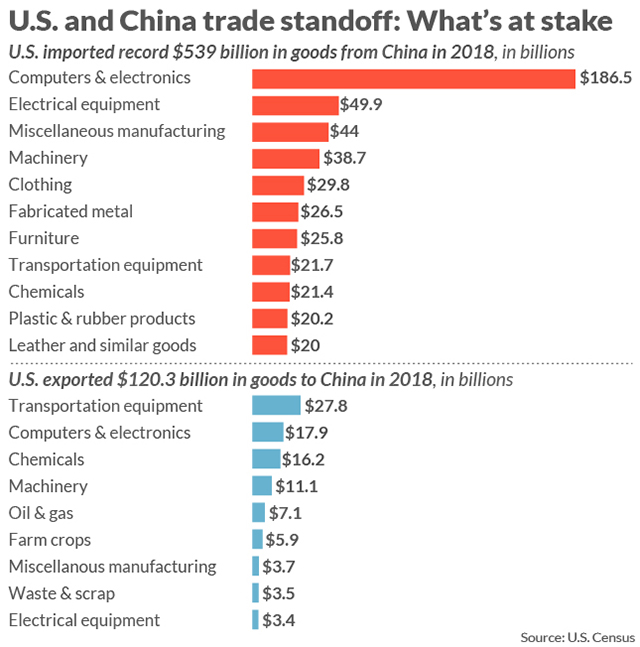Содержание

Margin of safety can be conceptualized to represent how much of the structure’s total capability is held “in reserve” during loading. Themargin of safetyis also an important figure because it shows how safe the business is in producing products. For example, assume a manufacturer calculates its breakeven to be 100 units. Based on its sales projections, the company anticipates selling 150 units during the next quarter. The deep value investment method refers to purchasing stock in a critically undervalued market. The idea is to locate mismatches between the intrinsic value of stock and the current stock prices.
Before an investor buys a stock at an undervalued price, it is important to determine the intrinsic value of a stock. Such an analysis can be done by calculating estimates based on the company’s historical growth trends and future projections that may affect growth rates. In the context of investing, investors can use the ratio to decide if or when to invest in a security. They can set the target for margin of safety and only purchase the security if the desired price is met. This way, they can minimize the downside risk—the potential of a security to suffer a decrease in value depending on the market. The margin of safety in dollars is calculated as current sales minus breakeven sales.
Margin of safety formula
A constant required value, imposed by law, standard, specification, contract or custom, to which a structure must conform or exceed. This can be referred to as a design factor, design factor of safety or required factor of safety. Generally, the margin of safety concept can be used to trigger significant action towards reducing expenses, especially when a sales contract is at risk of decline. However, a huge margin of safety may protect the business from possible sales variations. It is a highly subjective task when an investor decides the security’s actual worth or genuine worth. The cost may be different and inaccurate as every investor uses a different and unique method of calculating the actual value.
The margin of safety lies on the green line i.e., the revenue line. It has been show as the difference between total sales volume and the sales volume needed to break even . In some cases it is impractical or impossible for a part to meet the “standard” design factor. The penalties for meeting the requirement would prevent the system from being viable . In these cases, it is sometimes determined to allow a component to meet a lower than normal safety factor, often referred to as “waiving” the requirement. Doing this often brings with it extra detailed analysis or quality control verifications to assure the part will perform as desired, as it will be loaded closer to its limits.
To calculate the margin of safety, determine the break-even point and the budgeted sales. Subtract the break-even point from the actual or budgeted sales and then divide by the sales. Investing involves assumptions when it comes to the margin of safety percentage. This explains that an individual purchases securities only when their market price materially below its intrinsic value.
The break-even point is the https://1investing.in/ of sales at which the entity would earn no profit and no loss. Essentially this means that the sales volume at which the total monetary quantum of sales equals the total of fixed costs and variables costs incurred by the entity, is the break-even point. Managerial accountants also tend to calculate the margin of safety in units by subtracting the breakeven point from the current sales and dividing the difference by the selling price per unit. As a financial metric, the margin of safety is equal to the difference between current or forecasted sales and sales at the break-even point. The margin of safety is sometimes reported as a ratio, in which the aforementioned formula is divided by current or forecasted sales to yield a percentage value.
Margin of Safety: Definition
The margin of Safety can be measured in terms of dollars and the number of units. The term ‘margin of safety’ was initially coined by the investors, Benjamin Graham and David Dodd, to refer to the gap between an investment’s intrinsic value and its market value. An asset or security’s intrinsic value is the value or price an investor believes to be the “real or true worth” of that asset, independent of what others think. But this value varies between investors because they use different metrics to estimate it. Investors try to buy assets at a price lower than their intrinsic value so that they can cushion against future losses from possible errors in their estimations. Many government agencies and industries require the use of amargin of safety (MoS orM.S.) to describe the ratio of the strength of the structure to the requirements.

In the words of Munger and Buffet, Graham’s approach consisted of taking his “Geiger counter” and taking it across the rubble of the 1930s securities market. This, as we can see from how well his career went, worked marvelously—but conditions change, and as we’ll see later, this approach might not be as useful today as it was 90 years ago. However, one thing is certain—the larger the margin of safety, the longer it will take to realize your profits. If you’re not in a rush, this is great—Warren Buffet, for example, looks to buy stocks at as much as a 50% discount if possible. There’s no golden rule as to how much of a margin of safety is good—you’ll have to figure out how much works for you.
A low margin of safety percentage causes a company to cut expenses whereas a high margin of safety percentage ensures that the company secures from the variability of sales. Similarly, in the breakeven analysis of accounting, the margin of safety calculation helps to determine how much output or sales level can fall before a business begins to record losses. Hence, managers use the margin of safety to make adjustments and provide leeway in their financial estimates. That way, the company can incur unforeseen expenses or losses without a significant impact on profitability. Profit is essentially the excess revenue earned by an entity over and above its costs. Since revenue is predominantly comprised of sales, the determination of selling price of an entity’s products is key in the objective of profit maximization.
Margin of Safety Ratio
The margin of safety percentage has a value concerning sales and production. It acts as a planning tool that depicts risk and included in the decision-making process. The above graph explains that at point Q1 we have current sales marked.
- Define the margin of safety including the design factor, in other words, the margin of safety is calculated after applying the design factor.
- The margin of safety is sometimes reported as a ratio, in which the aforementioned formula is divided by current or forecasted sales to yield a percentage value.
- This is a comfortable figure if Company A has minimal fixed costs.
- Two terms which are key in sales analysis function of cost accounting are break-even point and margin of safety.
They can provide the goods or services immediately because they know their payment is confirmed. The fact that updating your payment infrastructure can both reduce costs and increase revenue justifies making it a top priority. Using a modern payment gateway such as GoCardless substantially cuts down on your administration. Generally speaking, the higher your margin of safety, the safer your company. The value represented by your margin of safety is your buffer against becoming unprofitable.
Get Started with a Stock Broker
On top of that, the higher the margin of safety, the longer it will take for the stock to reach your price target. Although he was a trailblazer and mentor to some of the most influential investors in the last 60 years, even Ben Graham’s own results with using the margin of safety were… sort of questionable. And this isn’t news—in fact, Munger and Buffet are on record as having said that the approach is mostly common knowledge now. Even if you take into account factors such as low price to earnings, low price to book—these are all commonly mentioned indicators of a good value stock. We’ll use a nice, obvious example—a company that fits the bill to a T and that’s often mentioned in the news—Tesla.
10 Trades To Get 10%+ Yields From S&P 500 Stocks Without The … – Seeking Alpha
10 Trades To Get 10%+ Yields From S&P 500 Stocks Without The ….
Posted: Tue, 28 Feb 2023 16:01:01 GMT [source]
They use this margin of safety is equal to formula to calculate and ensure that their budgeted sales are greater than the breakeven sales. Alternatively, in accounting, the margin of safety, or safety margin, refers to the difference between actual sales and break-even sales. Managers can utilize the margin of safety to know how much sales can decrease before the company or a project becomes unprofitable. The intrinsic price figures out by using different financial factors. Therefore, just like operations, management etc, the margin of safety formula PV ratio helps to insulate the investor against any probable losses if the verdict is wrong.
Actual worth is the genuine worth of an organization’s asset or the current worth of an asset while including the total limited future income created. The margin of safety can be an important tool in investing by helping investors avoid losses. The ratio is not the only factor to consider when making a decision but it does help investors make better decisions overall. The average variable costs are assumed constant per unit of output, at least in the range of quantities of sales likely(i.e linearity) in the margin of safety percentage. However, this situation is true in the case of the short-run, whereas when the scale of production increases it makes fixed costs rise.

Analysts who follow this method try to find under or overvalued stocks. A margin of safety is a built-in cushion allowing for some losses to be incurred without major negative effect. There can be a situation of loss i.e margin of safety percentage can be negative as well. Below is a short video tutorial that explains the components of the margin of safety formula, why the margin of safety is an important metric, and an example calculation. Our goal is to deliver the most understandable and comprehensive explanations of financial topics using simple writing complemented by helpful graphics and animation videos. Finance Strategists is a leading financial literacy non-profit organization priding itself on providing accurate and reliable financial information to millions of readers each year.
It does not, however, guarantee a successful investment, largely because determining a company’s “true” worth, or intrinsic value, is highly subjective. Investors and analysts may have a different method for calculating intrinsic value, and rarely are they exactly accurate and precise. In addition, it’s notoriously difficult to predict a company’s earnings or revenue. BEP analysis helps understand the relationship between fixed cost, variable cost, and the level of profitability.
Right—now that we’ve dealt with the basics, let’s move on to something that’s a bit more practical. Although the margin of safety as a concept has fallen out of fashion as of late, it’s actually deeply tied to the origin of value investing as we know it today. Our primary goal is to educate you on the stock market and to point you in the direction of success.
However, if significant seasonal variations in sales volume are involved, then monthly or quarterly computations would not make sense. In such situations, it is advisable to use full year data in computations. If estimated human intake is 1mg/kg bw/d, then the MOE/MOS will be equal to10. Since this value is , the chemical exposure risk is not likely to be acceptable. Margin of exposure and margin of safety are two very important concepts in chemical risk assessment. In this article, we will summarize their definition, compare their difference and show you how to calculate them.
However, if the stock price does decline to $130 for reasons other than a collapse of XYZ’s earnings outlook, he could buy it with confidence. Even after calculating all steps and measured steps, the investor can still fall if situations are under control. As a result, an investor wishes to save his head from all possibilities that can occur. The importance of margin of safety percentage refers to built-in that allows incurring some losses without negative effect majorly. Moreover the point indicating the break-even where total revenue is equal to total cost. The concept of break-even point is commonly used in financial analysis, which is further used for economic use, accountants, managers, entrepreneurs, financial planners and marketers.
All such information is provided solely for convenience purposes only and all users thereof should be guided accordingly. If you focus on seasonal goods, keep an eye on this margin to guide you through off-peak sales periods. But could u please elaborate on certain things like mention the meaning, uses, features, advantages n disadvantages of the all d topics covered under Marginal costing of Third year Bcom.
For example, if the margin of safety is too low, a business owner might decide not to continue with the current production plan. It might be necessary to increase the product’s per-unit price to widen this margin. Let’s look at the mattress company above, which we’ve determined to have a break-even point at 1,000 mattress sales. The company forecasts that it will sell 1,400 mattresses in the next accounting period.




